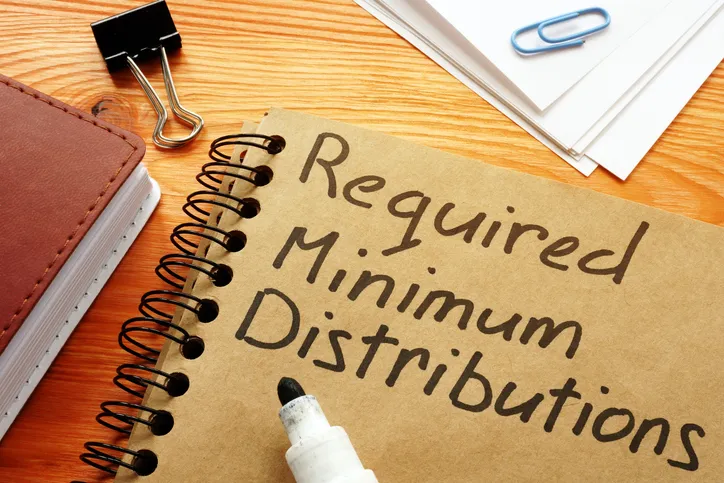I have to take RMDs this year. How do I decide if I should convert that money into an existing Roth? What needs to be considered? If so, how should it be done: at one time or in increments? I am considering incrementally over several years.
– Ella
In many cases, doing Roth conversions even after required minimum distributions (RMDs) begin is a great way to reduce taxes and give you greater control over distributions. Typically, an incremental approach is going to be best but that depends on the balance in your account and your other income. I’ll walk you through the analysis so you can decide whether this strategy may benefit you and what the best approach could be.
Do you have a financial question you want answered? Email AskAnAdvisor@smartasset.com or connect with a financial advisor for free using our matching tool.
Roth Conversions and RMDs
Let’s start with some background information to give the proper context for readers who may not be familiar. RMDs are just what they sound like: specified minimum distributions that you must take, whether you want them or not, beginning at age 73 (age 75 if you were born in 1960 or later). You calculate your RMD for a given year using your account balance as of December 31 of the prior year and your current age. It is a minimum, so you can of course withdraw more, but you have to take the prescribed amount at the very least. These distributions are taxable, as the whole point of the rule is to prevent endless tax deferral.
Roth accounts, however, are not subject to RMDs. Converting tax-deferred money into a Roth account can reduce future RMDs by reducing the balance of your tax-deferred account. The two major benefits are the potential to reduce taxes and give yourself more control over future distributions.
(And if you have more questions around RMDs, match with a financial advisor who serves your area and see how they can help.)
You Cannot Convert the RMD Itself

A point of clarification that I think we need to address up front is that you cannot convert the RMD itself.
For example, suppose you had $100,000 in a tax-deferred IRA as of Dec. 31, 2024, and an RMD requirement (to be taken in 2025) of $5,000. You cannot move that $5,000 into a Roth IRA, it must be withdrawn. You can still convert $5,000 (or any other amount you choose) in 2025, but it would be in addition to your RMD.
The conversion will reduce your account balance and therefore reduce the next year’s RMD. So, suppose you have that $100,000 balance as of Dec. 31, 2024, and an RMD of $5,000 in 2025. Assume you then convert another $10,000. Ignoring any growth and assuming no further withdrawals, your balance at the end of the year would be $85,000 instead of $95,000 without the conversion. This would lead to a smaller RMD and less taxable income in 2026.
(And if you need help deciding whether Roth conversions are a suitable strategy for you, connect with a financial advisor and talk it over.)
Reducing Your Tax Liability
When considering a Roth conversion, the key question is whether paying taxes now leaves you better off than paying them later. A conversion can make sense if today’s tax rate is lower than the rate you expect in future years, but less so if the opposite is true. The concept sounds straightforward, yet the calculation often involves several moving parts, including your income, deductions and timing of RMDs.
Start with your current marginal tax bracket. Suppose you are in the 22% tax bracket. If you do a Roth conversion then you’ll owe 22% of that amount, assuming you don’t cross into the 24% bracket, which starts at $103,351 for single filers in 2025. Should that happen, you’ll owe 24% on the portion of your income that exceeds $103,351. If this is lower than what you expect your future marginal tax bracket to be then you may be better off converting. If not, it may be better to wait.
Of course, this requires that you have a long-range plan so that you can estimate what you expect your future tax bracket to be. This is where the incremental or partial Roth conversions may come into play. Most people will consider converting up to a certain income tax threshold each year without crossing into the next higher one. This could mean it takes several years to get everything moved over into your Roth account.
Specific Considerations Regarding Retirement Income
As you estimate current and future tax brackets, it’s important to consider a few components of income that uniquely impact retirees:
- Taxability of Social Security benefits: The amount of your Social Security benefit that you must include in your taxable income is a sliding scale. It can be as low as 0% or as high as 85%. The higher your other income is, the greater the portion of your Social Security benefit that you must include. This matters here because a Roth conversion can affect it. If your conversion increases the amount of Social Security benefits subject to taxation then you need to account for that as well or you may significantly underestimate the tax implications of a conversion.
- Medicare premiums: While most retirees receive premium-free Part A, Parts B and D have premiums. You may have to pay an additional income-related monthly adjustment amount, or IRMAA, if your income is high. Roth conversions could impact this as well.
- RMD percentage increases over time: Don’t forget that the portion of your account you must withdraw as an RMD increases over time. They are less than 4% of your balance in the early years, but grow to about 5% at age 80 and are over 8% by age 90. If you don’t otherwise draw down your balance then your RMDs themselves may increase your future marginal tax rate.
Don’t think of these as lines in the sand. In other words, it could still make sense to convert even if it increases taxation on your Social Security or subjects you to IRMAA. Remember, this analysis is comparative so you need to weigh it against what you expect in the future based on your personal circumstances and plan.
(Match with a financial advisor to see how these factors may impact your plan for Roth conversions.)
Increasing Control
Another reason to do Roth conversions is to simply give yourself more control over when you withdraw money from your retirement account. RMDs can force higher withdrawals than you may otherwise plan to take, and moving that money into a Roth account allows you to reduce or avoid them. Again, keep in mind that the portion of your account that you must withdraw as an RMD increases over time.
Bottom Line

Roth conversions may allow you to reduce your overall tax burden and give you greater flexibility with the amount and timing of your retirement withdrawals. You need to estimate and compare current and future expected tax liabilities, but also consider how important extra control over your taxable income might be to you.
Tips for RMD Planning
- A financial advisor can help you plan around your RMDs and devise a retirement income strategy that aligns with your needs. Finding a financial advisor doesn’t have to be hard. SmartAsset’s free tool matches you with vetted financial advisors who serve your area, and you can have a free introductory call with your advisor matches to decide which one you feel is right for you. If you’re ready to find an advisor who can help you achieve your financial goals, get started now.
- Rather than selling investments randomly, consider using RMD withdrawals as an opportunity rebalance your portfolio and trim overweighted asset classes. This can help keep your portfolio aligned with your risk tolerance without triggering extra sales.
Brandon Renfro, CFP®, is a SmartAsset financial planning columnist and answers reader questions on personal finance and tax topics. Got a question you’d like answered? Email AskAnAdvisor@smartasset.com and your question may be answered in a future column.
Please note that Brandon is not an employee of SmartAsset and is not a participant in SmartAsset AMP. He has been compensated for this article. Some reader-submitted questions are edited for clarity or brevity.
Photo credit: Courtesy of Brandon Renfro, ©iStock.com/designer491, ©iStock.com/Iuliia Zavalishina
